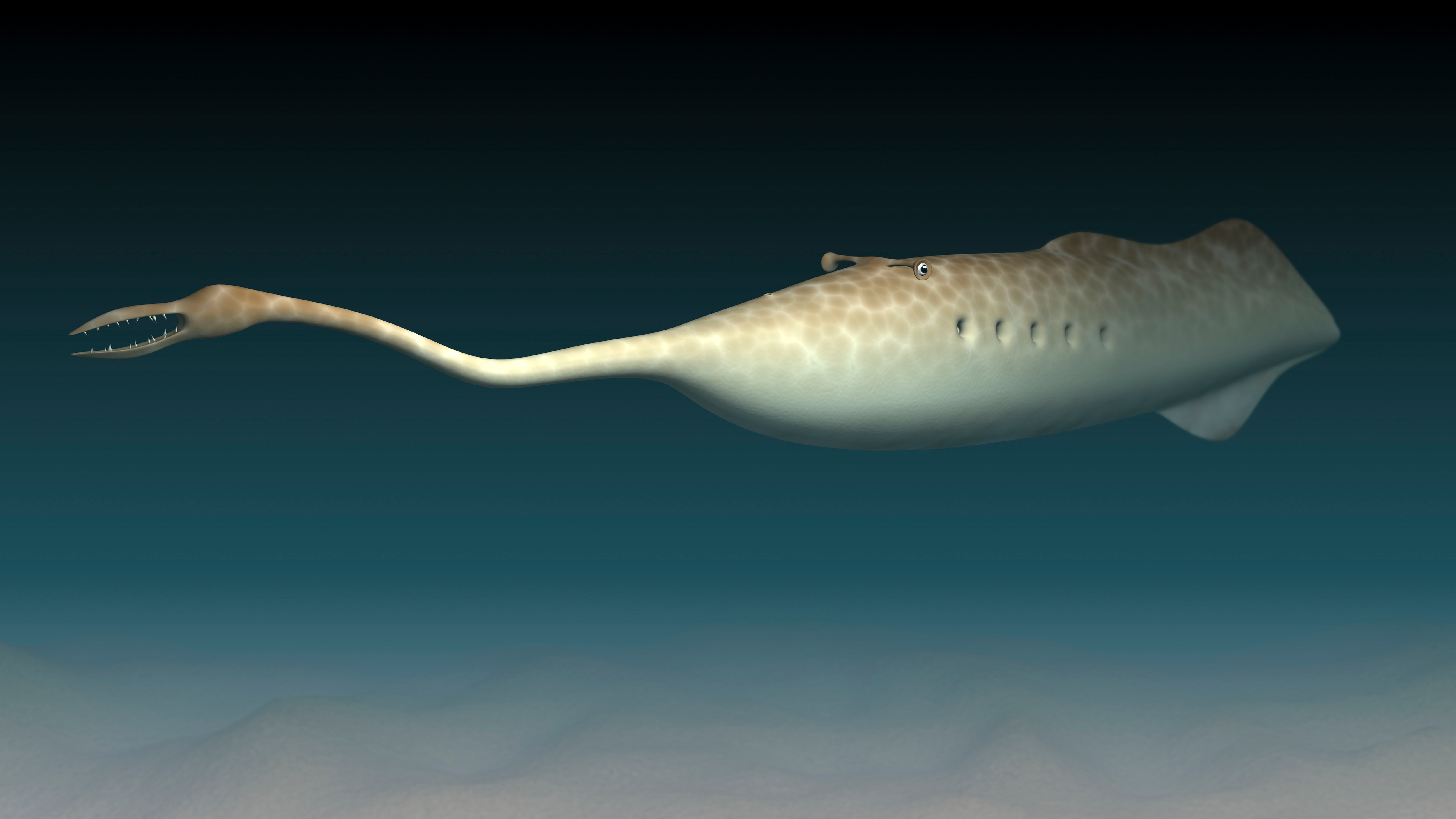Create a free profile to get unlimited access to exclusive videos, sweepstakes, and more!
What exactly was this bizarre ancient mashup monster that has scientists baffled?

Tullimonstrum gregarium could pass for part squid, part submarine, part hammerhead shark, and part cuttlefish, and scientists still can't figure out what exactly to classify it as.
What is now the state fossil of Illinois still hasn’t been classified as a vertebrate or invertebrate. Previous studies have highlighted features from one type of life-form only to find contradictory weirdness. Now a team of scientists at Stanford University, led by postdoctoral researcher Chris Rogers, is trying to demystify the fossil of the 300-million-year-old sea creature that looks like it came out of a B horror movie about the dangers of messing with DNA.
From far away, the enigma that is the Tully Monster (which was named for its discoverer Francis Tully) could easily be a gargantuan sea slug. It’s only when you get closer that you notice the eyes on stalks. Where its mouth should be extends a peculiar tentacle-like appendage ending in a claw that could easily belong on a crab or lobster. Was that its mouth? Did it even have a mouth? That question has gone unanswered. No one is sure if it had a backbone, either.
“The body plan of the Tully Monster is so unusual in its entirety that it will greatly expand the diversity of whatever group it ultimately belongs to, changing the way we think about that group of animals,” Rogers wrote in an article for The Conversation.
Whether or not Tullimonstrum had a backbone has been the ongoing debate since it was first discovered in the Mazon Creek fossil beds of Illinois by Tully, an avid fossil collector, back in the ‘50s.
Scientists who studied the monster’s remains in 2016 insisted it was a vertebrate because of the melanosomes, or pigment granules, in its eyes, which showed the same arrangement of shapes and sizes as they do in vertebrate eyes. The problem is that the eyes of some invertebrates (think squid and octopus) also have a similar arrangement of melanosomes.
For Rogers, it was time to bust out the particle accelerator — and not just any particle accelerator. He and his team used a synchrotron radiation lightsource, which gives them an inside look at the chemical makeup of the fossil and see how it compares to animals that still exist.
“The synchrotron bombards specimens with intense bursts of radiation to 'excite' the elements within them,” Rogers explained. “When excited, each element releases X-rays with a specific signature. By detecting the emitted X-ray signatures, we can tell what elements were excited and ultimately what the specimen we’re interested in is made of.”
Some things haven’t changed much in hundreds of billions of years. The team found that there is a higher zinc to copper rate in the melanosomes of modern vertebrate eyes compared to modern invertebrates, and fossilized vertebrates also had that higher ratio next to invertebrate fossils. Tully came in closer to the ratio in the eyes of invertebrates, but the mystery doesn't end there. It still had a different type of copper in its eyes than both extant and extinct invertebrate specimens. So what is it?
Rogers doesn’t know for sure, but his team’s research “demonstrates how studying fossils at the chemical and molecular levels can play an important part in figuring out the identity of this and other enigmatic creature[s],” he said.
What we do know for sure is that this thing needs to star in its own movie.
(via The Conversation)














